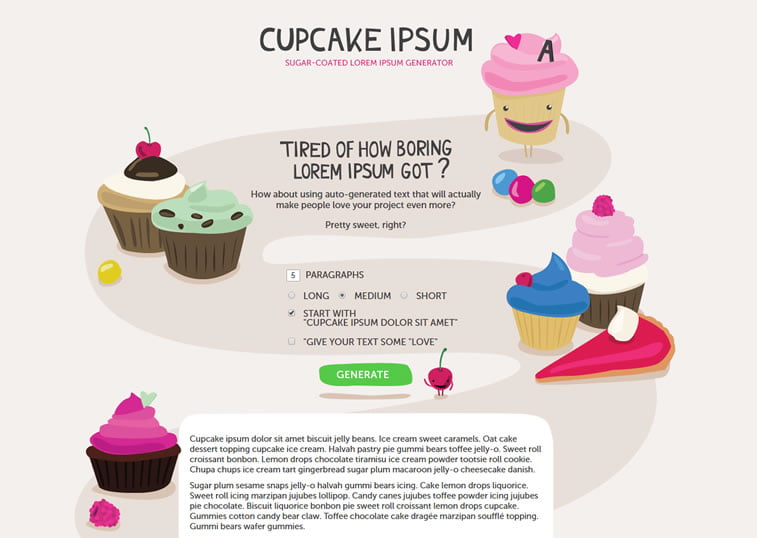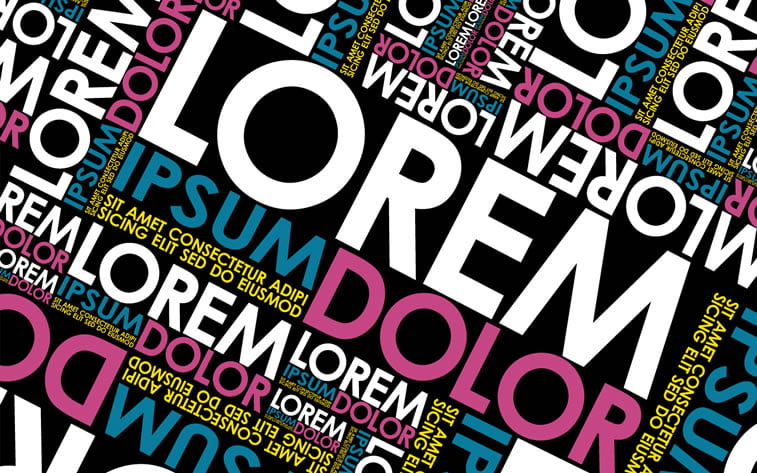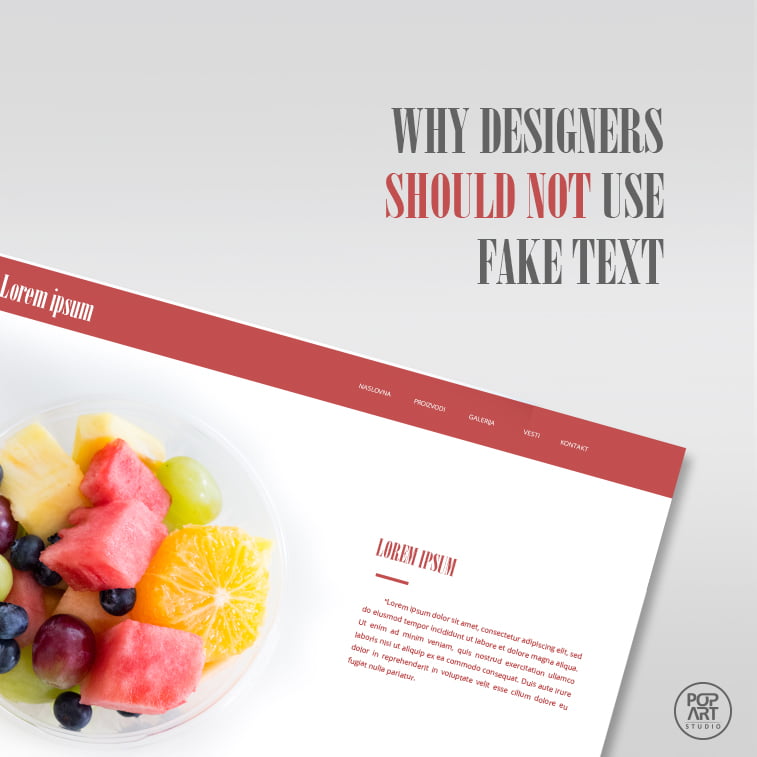Lorem ipsum is not your friend. The sooner you adopt this stance, the better for your design, your clients, and yourself.
Even though this topic has been debated over for quite some time now, it seems that it needs to be re-addressed because new designers and writers pop out every day.
First off, let us see what fake text is and why it should not be used in the design process – but rather replaced with one of the forthcoming solutions.
What is fake text?
Fake text, lorem ipsum, Greek text, dummy text, random text, sample text, placeholder, filler text – these are all the names for one and the same phenomenon – the usage of ready-made text so as to fill in the content gap while outlining design elements, such as typography, spacing, web design, headings, layout, flow, etc.
The most famous fake text is, definitely, the lorem ipsum text, a nonsensical variant of Cicero’s text De finibus bonorum et malorum (On the boundaries of goods and evils, sections 1.10-32-3) written in pseudo-Latin form, deliberately altered to make it incomprehensible to the common reader.
It has been used since early 1960s – some even say that there are indications of it being used in the 16th century. It is interesting that the original Cicero’s text does not contain letters K, W and Z (which did not exist in Latin) and digraphs – these were inserted in order to appear more and resemble European languages.
Other than lorem ipsum, there is a number of other dummy text generators on the web, such as Malevole, Charlie Sheen dummy text, Cupcake Ipsum, RandomText, etc.

Why not use lorem ipsum?
There is an obvious answer to this question: it is not real.
Sure, it helps you work around the gap, but it can cause serious harm to the design later on – for example, if forgotten to be replaced on time, it can cause embarrassment for public shaming or even a lost gig. Or, if you use dummy text to test layout and later get a much shorter or longer text – it is going to be painful to edit it after the design was done.
Design for content, instead.
Just like choosing the right typography, content is as important because it will be an integral part of your design and the two need to be prepared simultaneously.
So, when can I use dummy text?
Only in the first phases, when you are testing different designs.

Urge your client to send you a text (any text, even a draft, or the first version) as soon as possible, because it will make your life miserable otherwise. Prevent having to beg for content before the design goes to printing or even worse – online. These things can kill newborn sites, packages, not to mention the financial harm.
What to do instead?
If you really do not have other option (i.e. no other content) there are still some things you can do to avoid fake text and still have something to fill the design:
1. Ask your client to give you as much information as possible – even the first draft. As you go through the process, the design and content will be improved – and it is normal for them to evolve and be altered. The odds are, nevertheless, that the first and last version of every design will be so much different, almost unrecognizable.
2. If you are doing a redesign, use the existing content which is to be rewritten later. It is better to have something rather than nothing.
3. Write the content yourself using the hints given by your client. Sure, not everyone has a knack for writing, but with time, you should be able to produce a rough copy of your first design and use that text until your client gives you their copy. If you happen to work with an SEO copywriter or
4. Copy content from competition. This is not our first choice, either, but it gives you a sense of the niche and it is still better than using random text.
Always double check that you have replaced content with the newest copy. Always!
What do you, as a designer or copywriter, think about lorem ipsum texts? Do you find it acceptable and do you find other ways to work around it – other than those we have listed above? If so, please feel free to write your thoughts in the comments section below.





